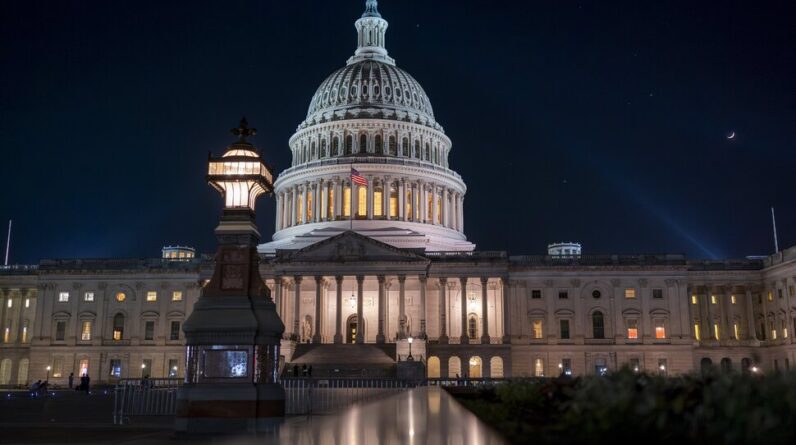
The U.S. Capitol is seen in Washington, Monday evening, May 22, 2023, as negotiators for President Joe Biden and House Speaker Kevin McCarthy, R-Calif., continue to meet in impasse over the government debt ceiling. There was no deal on Monday as Washington races to reach a budget compromise and raise the nation’s debt limit in time to avoid a potentially devastating federal default as early as next week. (AP Photo/J. Scott Applewhite)
LOGAN – The United States reached its $31.4 trillion debt ceiling in January 2023. Without the ability to increase the debt, the Treasury Department has been conducting complicated financial maneuvers to prevent the government from defaulting. The ability to avoid such maneuvers will likely run out in the coming weeks with Treasury Secretary Yellen pointing to a June 1 deadline. Fortunately, there are reasons to believe that it is intentionally conservative to spur Congress to act, but regardless of the exact timing, the next set of measures would be increasingly painful financially.
These possible next steps could include suspending reinvestment in federal pension funds, reducing Social Security distributions, or suspending Defense payments, all before suspending interest payments and/or returning principal of Treasury bonds, which would constitute a default.
This is not a unique circumstance; it is the 79th time since 1960 that the debt ceiling has been reached. With a few notable exceptions, the debt ceiling has been raised mostly without much political drama. Arguably, it wasn’t until 2011 that the debt ceiling began to be used seriously as a political weapon. The idea that the US would choose to default on its debt contributed to a downgrade of US debt and a sharp sell-off in equity markets. 2013 brought another round of contentious policies, as House Republicans tried to use the debt ceiling to force a defunding of the Affordable Care Act.
Although it might be more contentious, the 2013 debt ceiling debate did not provoke a huge market reaction, nor did subsequent debt ceiling debates. At the time of writing, we see little evidence that 2023 will be any different. We focus on the VIX index, short-term credit spreads and the US dollar as leading indicators of market concerns about the debt ceiling. Credit default swaps point to a probability of default of less than 4% which, while high, is less than half the implied probability of default at the worst point of the 2011 crisis.
The lack of reaction in the market today is much more a sign that a breach is highly unlikely than consequences that are not serious. In our view, the biggest risk comes from the possibility that even a very short-lived default could wreak havoc on the banking system through an unprecedented reduction in systemic liquidity. Coupled with the lingering pain of rapidly rising interest rates and uncertainty surrounding some home loans, banks may be in a weak position to deal with this added stress.
A default could have long-term ramifications for the perceived safety of US Treasuries. In the event of a politically induced default, everyone would know that the US can default on its debt and would eventually choose to do so. Although it is certainly negative, in the long term the consequences of a defect are more difficult to predict. It would make sense for markets to permanently demand higher yields on US debt and for investors to seek diversification from the dollar. Which, over time, could jeopardize the dollar’s status as a reserve currency. However, it is a relative world and there is no great alternative to Treasuries for large investors. Default or not, the US would remain the world’s largest economy with the deepest financial markets.
Fortunately, we believe that the dire consequences of inaction will force an end to the theater. Congressional and White House leaders recently affirmed their commitment to avoid a default. Unfortunately, we also think we’ll be talking about another debt ceiling debate for years to come.
DISCLAIMER: Adams Wealth Management is a registered investment advisor. The information presented is for educational purposes only and is not intended to constitute an offer or solicitation to sell or buy any specific securities, investments or investment strategy. Investments involve risk and, unless otherwise stated, are not guaranteed. Be sure to first consult with a qualified financial advisor and/or tax professional before implementing any strategy described herein. Past performance is not indicative of future performance.
[ad_2]
Source link





